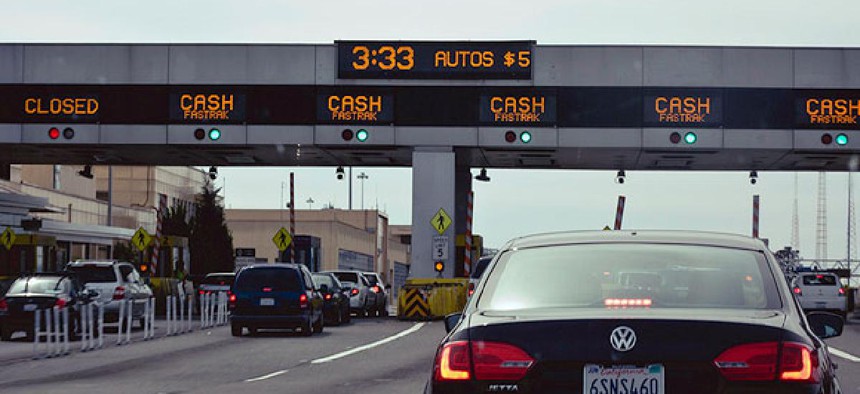DHS eyes toll booths to automatically detect GPS jammers

Flickr user hunteredwards
Manual methods take more than a year.
Detectors installed in turnpike toll booths could help locate Global Positioning System jammers, a Homeland Security Department official told a GPS conference Tuesday.
In November 2009, the Federal Aviation Administration experienced outages of a GPS system that provides precision landing information at Newark Liberty International Airport. Officials eventually traced the problem to a trucker on the adjacent New Jersey Turnpike who used a jammer to evade his company’s operations center. But the search took a year and a half.
One way to detect jammers faster is to install sensors on toll booths and pair them with camera systems to identify vehicles equipped with the gadgets, John Merrill, program manager for position, timing and navigation at DHS, said during a conference of the Civil GPS Service Interface Committee in Nashville.
The Federal Communications Commission bans sales and operation of all signal jammers, including GPS jammers, but Merrill said an Internet search just prior to the conference resulted in almost 2 million hits on the phrase “GPS jammer.” The devices cost as little as $30 when purchased online.
In a presentation to the Workshop on Synchronization in Telecommunication Systems in Broomfield, Colo., this March, Merrill noted it took FAA and FCC until April 2011 to locate the GPS jammer operating on the New Jersey Turnpike.
FAA suspected jammer interference in 2009, but did not start to pinpoint the problem until February 2010 when FAA and FCC deployed radio frequency detection gear and determined the source of interference was mobile and slow moving. They ultimately used both mobile and fixed detection gear as well as video cameras to locate the truck and seize the device.
Merrill said DHS has developed a national jammer detection system called Patriot Watch that feeds FAA and FCC information into a database analysts use to find errant signals.
Since GPS was developed in 1973, it has become the key component of a range of military and civilian critical infrastructure systems, Merrill told the Nashville conference. The systems are now essential to air, marine and ground operations; they also provide precise timing signals for wired and wireless network operations.
Col. Bernie Gruber, director for GPS at the Air Force Space and Missile Systems Center -- Los Angeles, told the conference there are roughly 1 billion civil GPS receivers in use today.
Russia has been developing its Global Navigation Satellite System since 1976 and now has 24 satellites in orbit compared to 31 GPS satellites. A number of manufacturers have started production of dual GLONASS/GPS receivers, which provide better accuracy than a GPS-only receiver.
Ray Clore, senior GPS adviser at the State Department’s Office of Space and Advanced Technology, told the conference that Russia wants to set up GLONASS monitoring sites in the United States. Discussions on this request are ongoing, he said.



